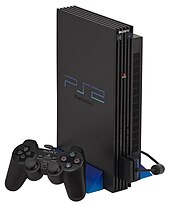Fifth Generation Consolesthe History Of Video Games
During the fifth generation of consoles, the most popular and preferred way of playing video games were on PC or computers. Companies needed to develop consoles to keep up with PCs and computers to get back into the market. The first couple of consoles created during this generation did not live up to the expectations. The Fifth generation of video game hardware (1993-2005) expanded the home console market. With early CD technology, many companies made their own consoles such as Panasonic's 3DO Interactive Multiplayer in North America, Commodore's Amiga CD32 in Europe and NEC's PC-FX. Unfortunately these consoles failed due the lack of third party developers. Learning from mistakes of previous games.
Many of the most popular esports games today are PC games rather than console games. However, titles such as Call of Duty, Halo and Street Fighter remain important on the competitive video gaming scene. Consoles still have a big role to play in esports, and in video gaming in general, too.
There’s an ongoing debate in the gaming community about whether PC gaming or console gaming is “better”. It’s a pointless argument, really. Neither is definitively better than the other, as it’s ultimately a matter of personal preference. There will always be those who prefer to game on a PC, and there will always be those who prefer to use consoles.
PC gaming seems to have the slight edge right now, but who knows what will happen in the future? If there’s one thing we know for sure about consoles, it’s that they’re constantly evolving. There’s every chance that they’ll continue to improve, and there may well come a time when console gaming leads the way once again.
In this article, we take a look at how home video game consoles have evolved over the years. We start by explaining how it all began with the Magnavox Odyssey. Then, we go through each subsequent generation of consoles, right up to today’s models.
Home > Articles > Home & Office Computing > Entertainment/Gaming/Gadgets
␡- Fifth Generation: 1989-1995

Like this article? We recommend
Like this article? We recommend
Fifth Generation: 1989–1995
The fifth generation of home video game systems featured 16-bit processors, more detailed graphics, and more imaginative games. This generation was dominated by Nintendo and Sega.
NEC TurboGrafx-16
Videogaming's fifth generation was ushered in by the 1989 American release of NEC's TurboGrafx-16. (The system was launched in Japan in 1988 as the PC Engine.) Although the TurboGrafx-16 was advertised as a 16-bit system, it actually used an 8-bit microprocessor, assisted by a 16-bit graphics chip and 64K RAM; it was notable as the first game console to have a CD player attachment. Unfortunately, a lack of games doomed the TurboGrafx-16 in the marketplace, and it was discontinued within four years of its initial release.
Sega Genesis
More formidable was the Sega Genesis game system (sold as the Mega Drive in Japan). Released to the U.S. market in 1989, Genesis was the first true 16-bit game system, using a Motorola 68000 microprocessor. Genesis was priced at $199 and ran excellent translations of Sega arcade hits; sales received a significant boost with the 1991 release of the Sonic the Hedgehoggame.

SNK NEO GEO
In 1989, third-party software developer SNK released a programmable video game system for arcades, dubbed the MVS (Multi-Video System). SNK ported this system to the home in 1990 as the NEO GEO system. The NEO GEO used both 16-bit and 8-bit microprocessors. Unfortunately, the high price of both the console ($650) and the game cartridges ($200) doomed the NEO GEO to an early death.
Nintendo Super NES
To compete with the Sega Genesis, Nintendo launched its own 16-bit system in 1991. The Super NES(known as the Super Famicon in Japan) sold for $199 and included the Super Mario World cartridge. The initial U.S. production run of 300,000 units sold out overnight; over the course of its product life, more than 46 million Super NES units were sold worldwide.
Philips CDi

In 1991, Philips (who, along with Sony, co-developed the then-emerging compact disc format) decided to leverage its compact disc technology into a 'multimedia' system capable of playing audio CDs, CDi and CD+G software discs, VCD video CDs, and Karaoke CDs. This multiformat machine confused the public, so in 1992, Phillips relaunched the CDi as a 16-bit video game console. This iteration was also unsuccessful because of the console's high price and lack of quality games.
3DO
Another early CD-based video game system was the 3DO Interactive Multiplayer. This system was unique because Trip Hawkins's 3DO company licensed the technology to other companies to create consoles and games; the first 3DO console was released by Panasonic in 1993, with Goldstar releasing a similar unit soon afterward. 3DO was the first 32-bit system released in the United States; it sold for $699. Despite the system's stunning graphics, the high price ensured its status as a niche system. The 3DO system was removed from the market in 1996.

Fifth Generation Consolesthe History Of Video Games Online
Atari Jaguar
Fifth Generation Consolesthe History Of Video Games To Play
In December 1993, a full six years since the release of its last game console, Atari attempted to re-enter the fray by releasing a 64-bit video game system. The CD-ROM-based Atari Jaguar promised to be a revolutionary machine but was hampered by a lack of game cartridges and practically nonexistent marketing. In 1996, Atari officially killed the Jaguar—and dropped out of the video game market altogether—when it merged with JTS, a manufacturer of computer hard drives.
Fifth Generation Consolesthe History Of Video Games On
Related Resources
- Book $21.59
Fifth Generation Consolesthe History Of Video Games Free
- eBook (Watermarked) $38.39
- DVD $8.00
